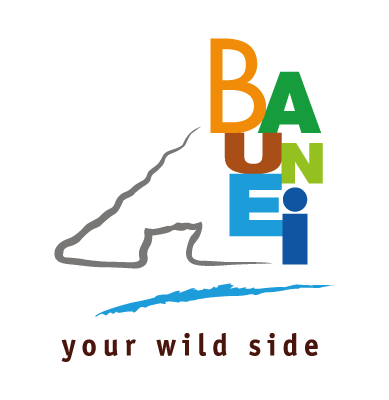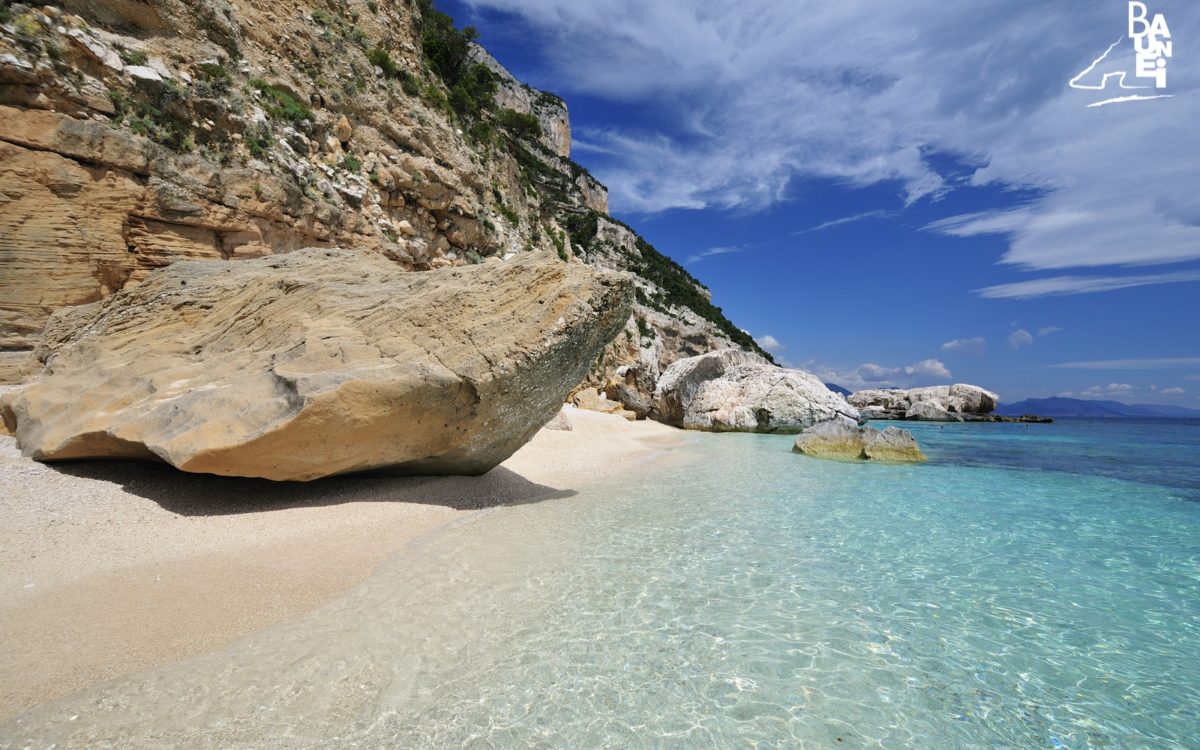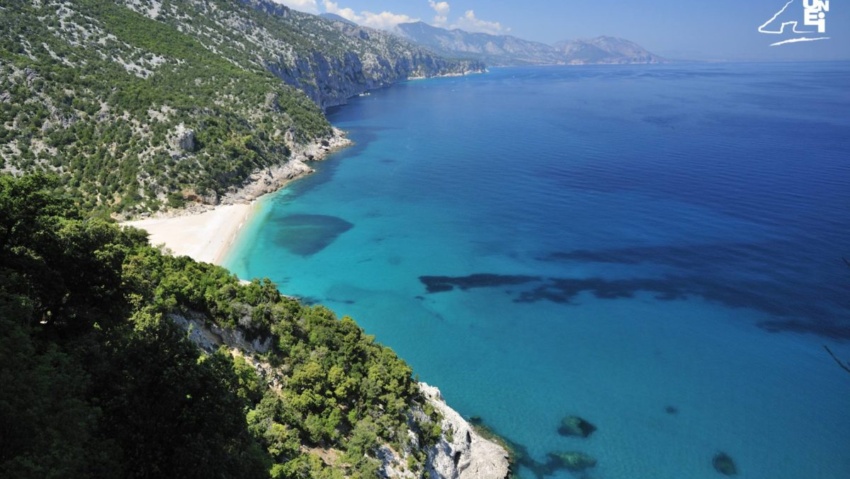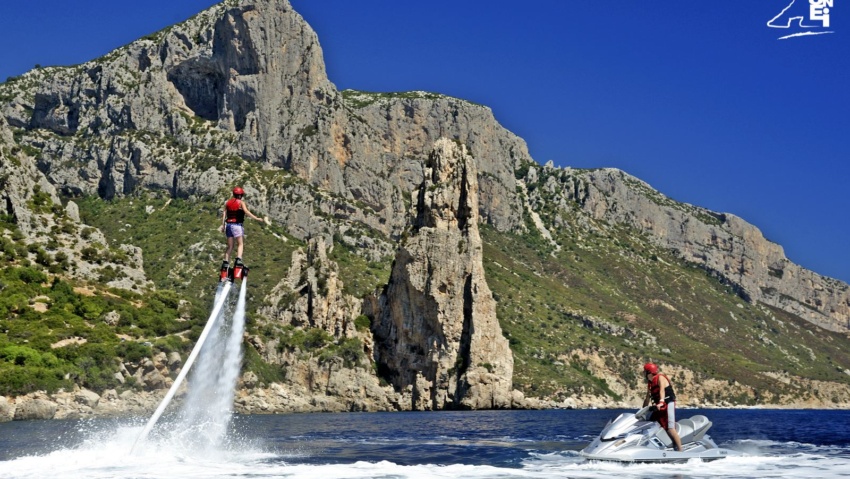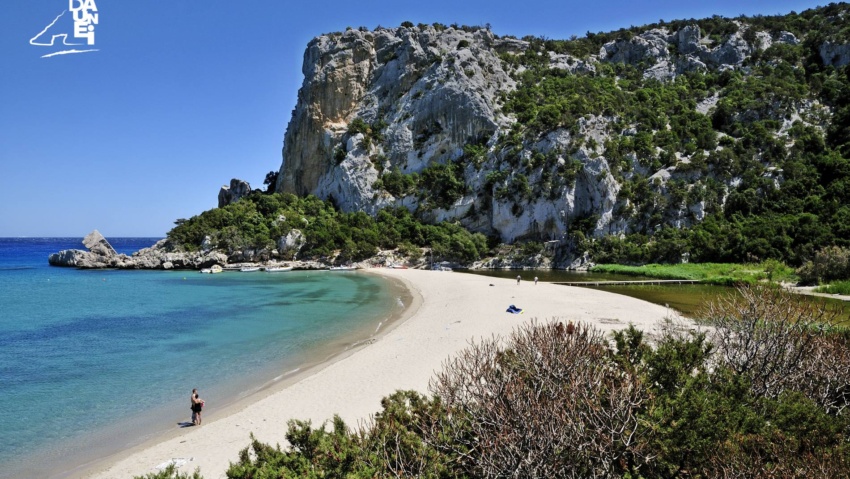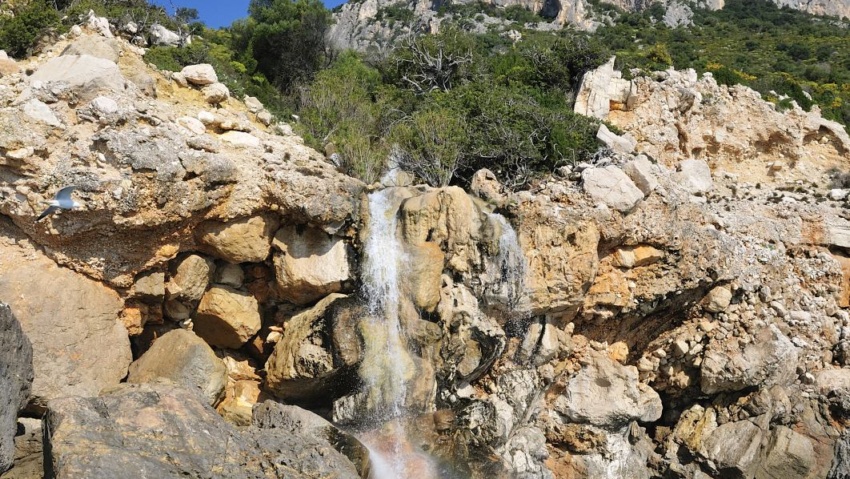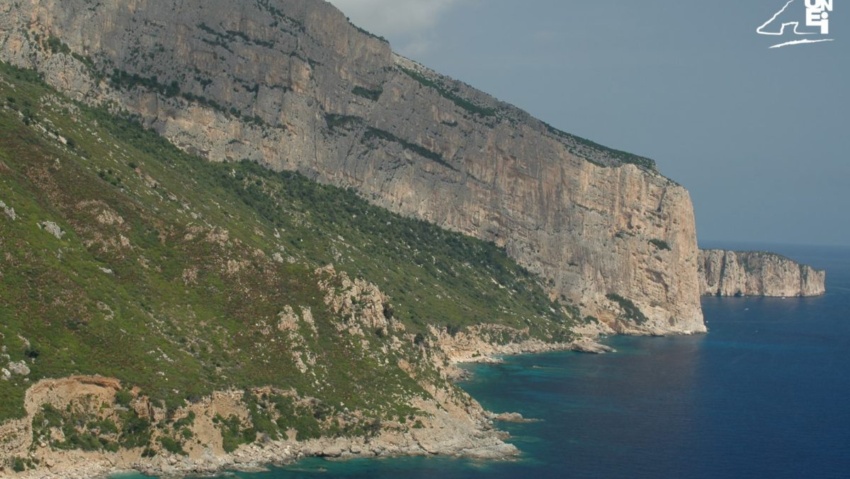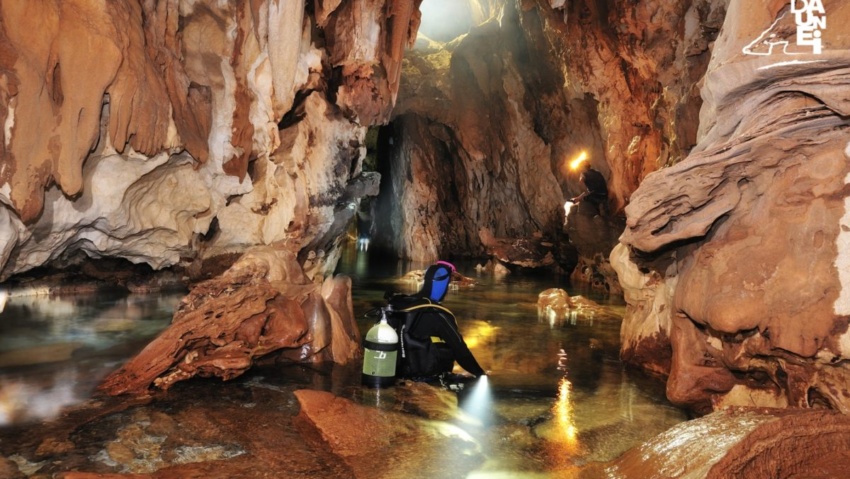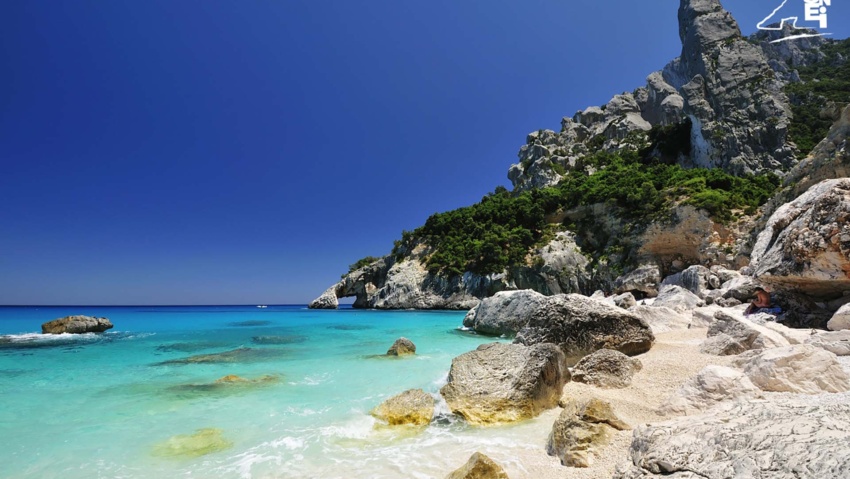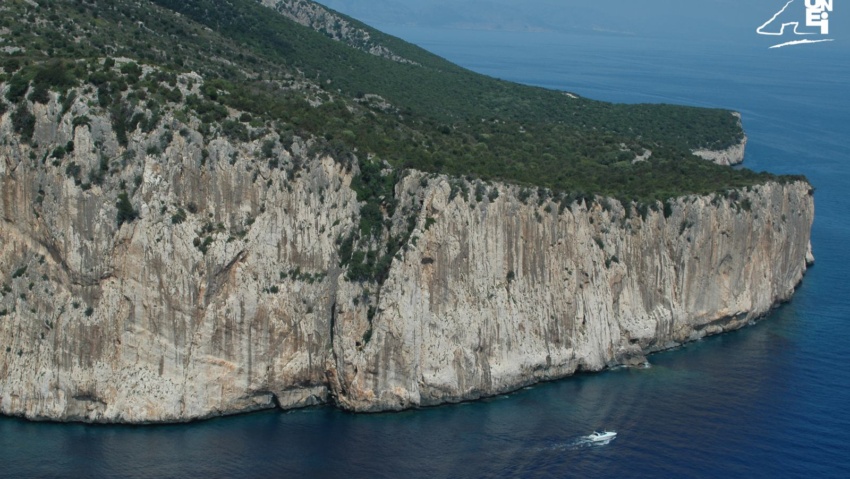“Ispulegidenie” – Cala Mariolu
Between the flat rock that marks the border of “Cala dei Gabbiani” and the sheer cliff that limits the “Ispuligidenie forest” in the north, is one of today’s most famous and popular beaches on the coast of Baunei. This beach, about 300 metres in length, divided into two parts by a big rock used as a mooring by boats carrying tourists, is now known by the dual name of “Ispuligidenie – Cala Mariolu”. The two names are explained by the curious history of this stretch of coastline and in a sense admirably summarise a past in which the stories of herdsmen and fishermen intertwine. First of all, the name “Ispuligidenie” precedes “Cala Mariolu”: this is because the former was given by the Baunei herdsmen who roamed inland, while the later was imposed by the Ponzese fishermen who settled in Cala Gonone and Arbatax in the early twentieth century. “Ispuligidenie” comes from “su pulige de nie”, which in Baunesis Sardinian literally means “snow fleas”, a poetic metaphor used by the local herdsmen to define the white pebbles smoothed by the waves that make up the beach and that probably, later on, came to mean the entire forest overlooking the beach. “Cala Mariolu”, on the other hand, more prosaically, means “thief’s cove” and this definition was given by fishermen from Ponza, who in their dialect that is derived from Neapolitan would call monk seals (which once used to frequent this part of the coast assiduously) “o mariuolo” (“the thief”), because they used to “steal” fish directly from the nets cast from the boats. Shortly afterwards, the term was given a Sardinian flavour by adding a “u” at the end, and from then on “Ispuligidenie” also began to be called “Cala Mariolu”. The Ponzese who renamed the Ispuligidenie beach had a lasting effect on the seafaring history of the coast between Arbatax and Cala Gonone. They came aboard special boats, called “mbruchièlle”, with which they fished for lobsters which they would then transport, still alive, up to Marseille. These skilled fishermen with unmistakably Neapolitans surnames such as Aversano, Vitiello and Morlè, having departed from an archipelago twenty miles off the coast of Lazio, brought the art of fishing to the coast of Baunei, where in 1834 Angius noted that “no one (…) ever dedicated themselves to sea fishing (…)”. Curiously, in 1959, over a century after Angius’ words, a woman from Baunei called Speranza Maddanu, who was married to a Ponzese fisherman, Giovanni Aversano, opened the first seafood restaurant of the entire Ogliastra region in Arbatax.
